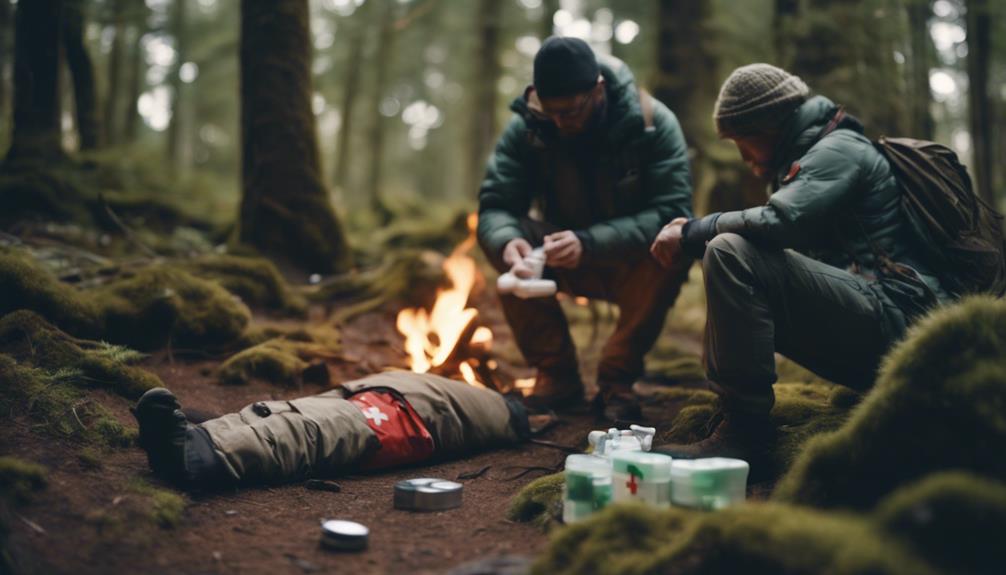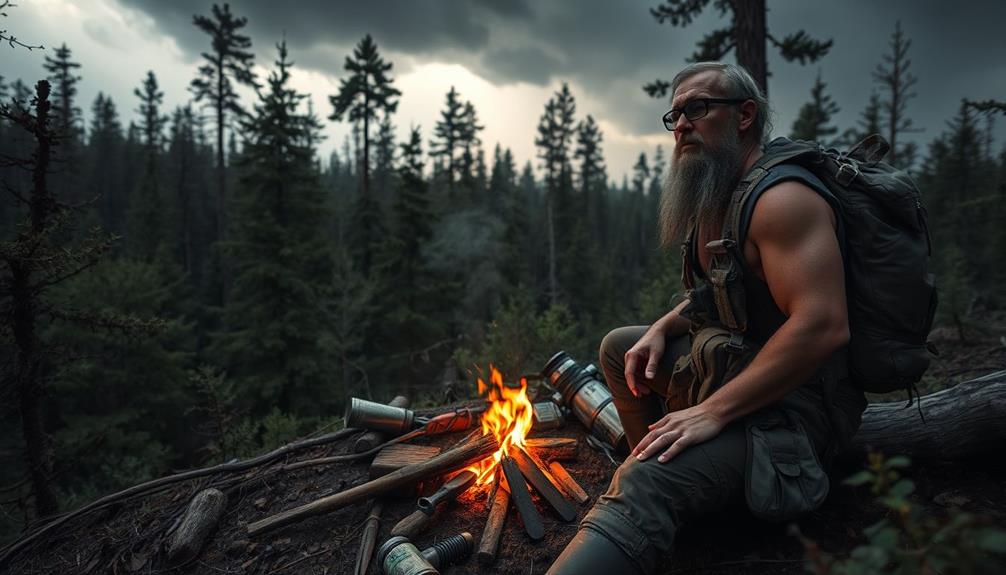Creating your dream gun range affordably involves strategic planning and adherence to legal regulations. Begin by reviewing local zoning laws and necessary permits, ensuring your land is compliant. Choose a site with natural backstops to enhance safety and minimize noise for nearby residents. Utilize durable materials for construction and implement cost-effective solutions, such as repurposing picnic tables for benches. Diversify target options to accommodate various skill levels, considering both DIY and store-bought choices. Regularly maintain your range for safety and functionality. For more insights on budget-friendly design and operation, explore further resources tailored to your needs. When it comes to selecting the best rifles for preparedness, consider the specific needs of your gun range. Choose rifles that are versatile and reliable, capable of meeting a wide range of potential scenarios. Research different options and consult with experienced shooters to determine the most suitable choices for your range.
Key Takeaways
- Research local laws to ensure your gun range meets minimum land requirements and zoning regulations for an affordable setup.
- Utilize natural terrain for backstops and repurpose materials like picnic tables for cost-effective shooting benches.
- Incorporate a mix of DIY and store-bought targets to cater to varying skill levels while keeping costs down.
- Regularly inspect and maintain your site to prevent hazards and ensure long-term sustainability without incurring high expenses.
Legal Considerations and Compliance
Before starting on the construction of an affordable gun range, it is imperative to thoroughly review local laws and regulations, as these can greatly vary by region and may dictate essential aspects such as land size and permitted activities.
Some jurisdictions may impose a minimum land requirement of 10 acres, while others may permit shooting on as little as 2.5 acres for rimfire rifles. Compliance with zoning laws is vital, and obtaining necessary permits is often mandated.
Additionally, local wildlife and environmental regulations should be assessed. Inspections may be required before the range can be operational.
Property owners must also understand liability issues to guarantee adequate protection against potential claims.
Site Selection and Safety
Selecting an appropriate site for a gun range is fundamental to guarantee safety and compliance with regulations while maximizing the shooting experience.
Consider locations with natural or man-made backstops, such as hills or ponds, to enhance safety. The terrain should be accessible and clear of hazards to facilitate shooting activities.
Distance from residential areas is critical to minimize noise disturbances, while evaluating the environmental impact and wildlife presence assures adherence to local regulations.
Additionally, regularly inspecting the site for safety hazards and maintenance needs is essential.
Establishing clear shooting zones and marking boundaries with visible indicators will prevent unauthorized access, ultimately fostering a secure environment for all participants.
Construction Essentials

With a suitable site identified, the next step involves focusing on the construction elements necessary to establish a functional and safe gun range. Key considerations include ensuring proper backstop installation, selecting durable materials, and maintaining accessibility for shooters.
Backstop Construction: Utilize natural terrain features or build a reinforced backstop to contain projectiles securely.
Target Supports: Construct stable target holders using pressure-treated plywood or metal, ensuring they can withstand repeated impacts.
Safety Features: Clearly mark shooting zones and establish boundaries to prevent unauthorized access, enhancing overall safety.
Target Options and Variability
A diverse range of target options can enhance the shooting experience, catering to various skill levels and preferences.
Incorporating both store-bought and DIY targets provides flexibility and creativity in practice. Traditional paper targets are widely available and suitable for beginners, while more advanced shooters may enjoy interactive options like moving targets or explosive elements.
Homemade targets can be crafted from materials such as plastic jugs, scrap metal, or even seasonal items like pumpkins. Additionally, utilizing mobile targets allows for dynamic shooting practice across different locations.
Cost-Effective Bench Solutions

How can shooters create cost-effective bench solutions that enhance their range experience while minimizing expenses? Opting for budget-friendly designs not only saves money but also allows for customization according to specific needs.
Here are three effective options:
- Repurposed Picnic Tables: These versatile structures can serve as multi-purpose shooting benches, offering ample space and stability.
- Cinder Blocks and Plywood: A simple and robust solution, this combination allows for a sturdy bench with minimal financial investment.
Required Skills for DIY
Essential skills in carpentry and basic construction are crucial for anyone looking to undertake DIY projects for an affordable gun range. Proficiency in using essential tools and understanding design principles will streamline the process and enhance safety. Key skills include planning, measuring, and executing construction tasks effectively.
| Skill | Tools Needed | Importance |
|---|---|---|
| Carpentry | Saw, Drill | Build stable structures |
| Measurement | Measuring Tape | Guarantee accuracy in design |
| Safety Knowledge | Safety Gear | Protect against injuries |
| Design Skills | Level | Create functional layouts |
| Problem-Solving | Various Tools | Overcome construction challenges |
Maintenance and Safety Practices

Regular inspections of the gun range are essential to identify safety hazards and guarantee proper maintenance of the facility. Implementing a robust maintenance and safety protocol guarantees a secure environment for all users.
Key practices include:
- Establishing clear shooting zones and marking range boundaries with visible indicators.
- Regularly checking and maintaining backstop integrity to effectively contain ammunition.
Additionally, it is imperative to enforce rules for safe handling and storage of firearms.
Engaging in these practices not only enhances safety but also fosters a culture of responsibility among shooters, ultimately guaranteeing a more enjoyable shooting experience for everyone involved.
Frequently Asked Questions
What Insurance Do I Need for My Gun Range?
To operate a gun range, liability insurance is essential to protect against claims of injury or property damage. Additionally, consider coverage for property damage, equipment loss, and potential environmental liabilities related to shooting activities.
Can I Charge Fees for Using My Gun Range?
Charging fees for using your gun range is generally permissible, provided you comply with local regulations and zoning laws. Ascertain all necessary permits are obtained and consider liability insurance to protect against potential risks associated with operation.
How Do I Handle Noise Complaints From Neighbors?
Addressing noise complaints from neighbors is akin to tuning a musical instrument; communication is key. Engage with them, consider sound barriers, adjust shooting schedules, and demonstrate willingness to compromise for a harmonious coexistence.
Are There Specific Training Requirements for Range Safety Officers?
Yes, specific training requirements for range safety officers typically include firearms safety certification, first aid training, and knowledge of emergency response protocols. Additional training in range operations and effective communication skills is also highly recommended.
What Should I Do if Wildlife Enters the Shooting Area?
If wildlife enters the shooting area, immediately cease all shooting activities. Assess the situation, ensuring safety for both humans and animals. Implement deterrent measures to prevent future occurrences and maintain a wildlife-friendly environment.
Conclusion
To summarize, crafting a personal gun range presents a unique opportunity to combine creativity and compliance, culminating in a safe shooting sanctuary.
By meticulously managing legal limitations, selecting suitable sites, and employing effective construction techniques, enthusiasts can establish an enjoyable environment that prioritizes safety.
Utilizing diverse target options and budget-friendly solutions further enhances the experience.
Ultimately, a harmonious blend of strategic planning and diligent maintenance guarantees a fulfilling and responsible firearm experience for all participants.










